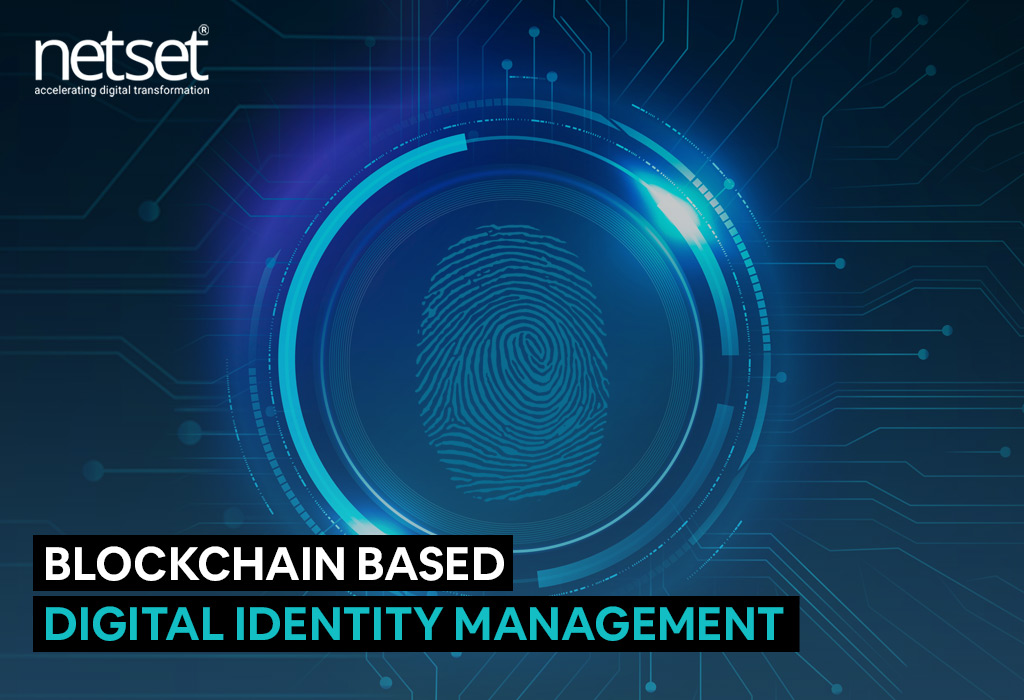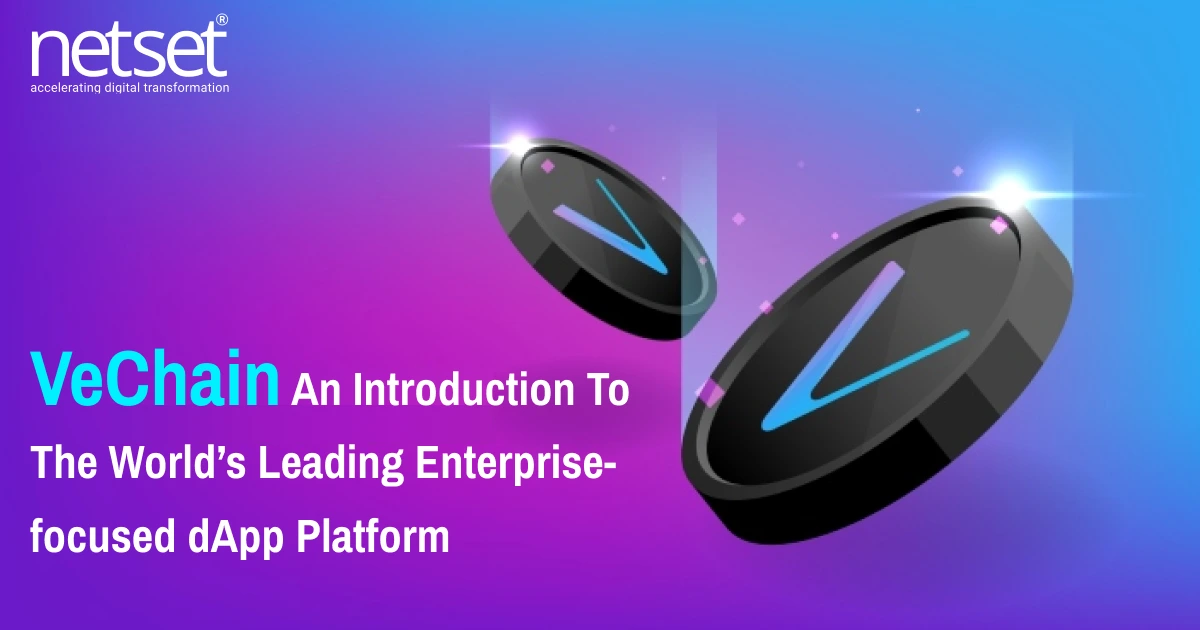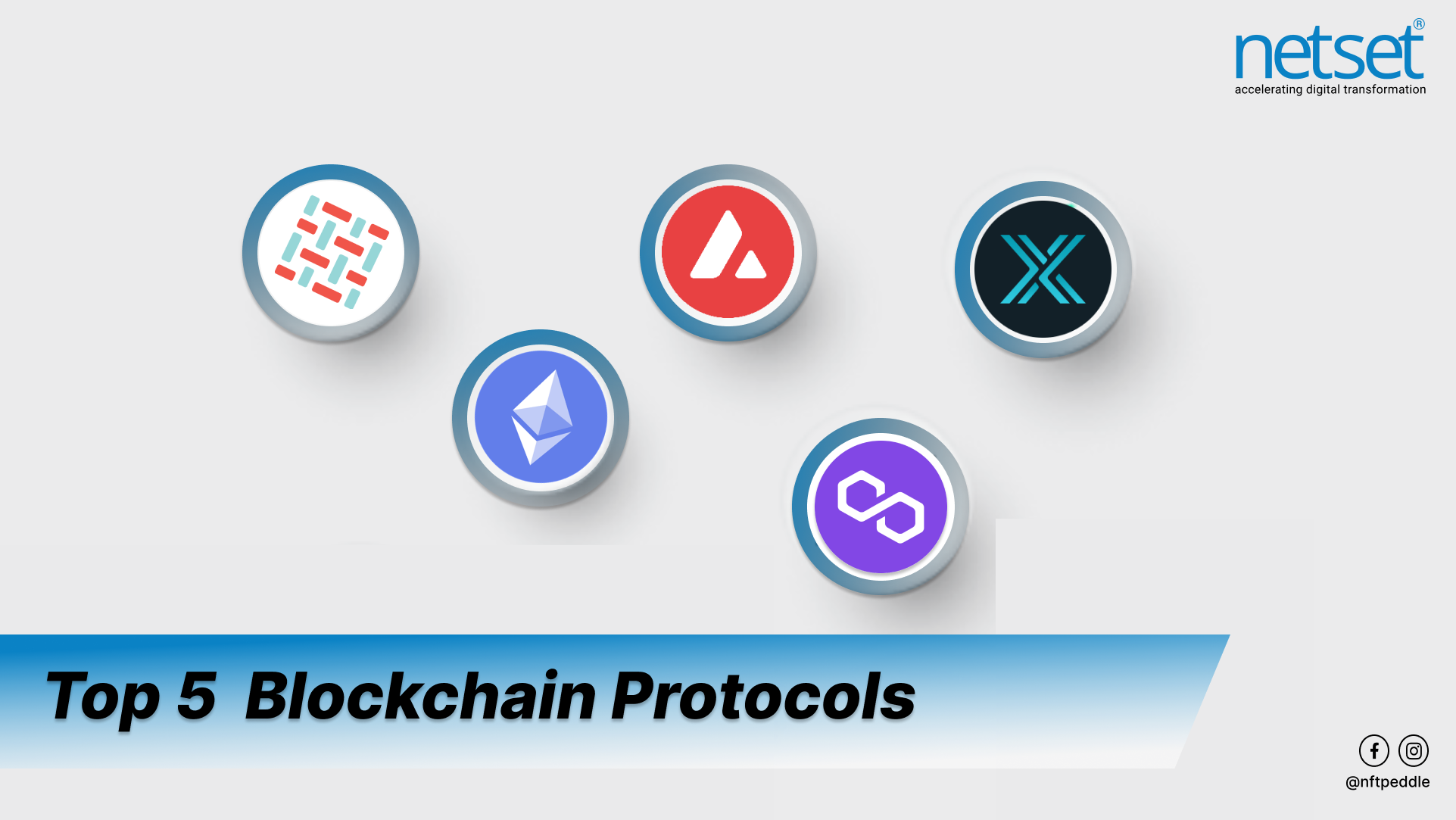The Future of Gas Fees: Will Layer 2 Solutions Solve the Problem?
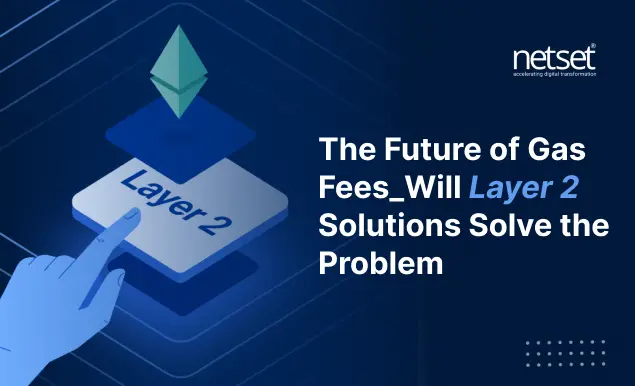
For most of the users who use Ethereum technology, Gas fees stay a key concern. Although the blockchain networks are gaining more recognition and adoption, the transaction fees still fluctuate constantly, which even reaches to unexpected peak limits at some points.
But, as we see the rise of Layer 2 solutions, there are some experts who believe that these technologies can reduce the gas fees notably with better scalability as well as the speed of transactions. But are they really an ultimate fix?
Let’s find out as we learn more about the future of gas fees, the role of layer 2 solutions and if they can really resolve the challenges related to blockchain networks.
Before that, it is better to understand the concept of gas fees in blockchain app development.
The Concept of Gas Fees in Blockchain
Gas fees are the costs that are required for executing transactions on blockchain networks like Ethereum. These are for compensating the network validators for processing and securing the transaction.
While the gas fees are important for maintaining blockchain integrity, they may be a challenge for users when the network becomes overloaded. There are a few factors that may affect the gas fees:
- Network Congestion: High demand for transactions increases the competition for block space, which further increases the fees.
- Smart Contract Complexity: When more complex operations are there, it requires more computational resources, giving an increase in the gas costs.
- Scalability Issues: In the traditional layer 1, the blockchains had limited transaction numbers, which caused bottlenecks and spikes in the fee.
Just because of such factors, blockchain developers as well as the users utilize the Layer 2 solutions, which is a promising way to mitigate the high gas fees without dropping any effect on the security and decentralization.
What is Layer 2 Solutions?
Now that we are clear about the concept of gas fees, how about understanding the concept of Layer 2 solutions. These solutions are off-chain or secondary protocols which take place on the top of existing blockchain networks and help the network to get better scalability and reduce the cost of transactions.
Here, instead of processing every transaction using the main chain known as layer 1, these solutions make a bundle of everything, compress the transactions before they settle on the blockchain.
Types of Layer 2 solutions
- Rollups—Bundling transactions together to reduce gas fees.
- Optimistic Rollups: The assumed transactions are valid by default, with fraud proofs giving better security.
- ZK-Rollups: Use zero-knowledge proofs to verify transactions without revealing any critical details.
- State Channels—Allow transactions to take place off-chain with only the final state being recorded on Layer
- Sidechains—Free the blockchains that connect to Layer 1 for periodic security updates.
- Plasma Chains—Create child chains that are known for executing the transactions before settling them on the main blockchain.
These solutions work in a combined format whose aim is to increase the transaction’s power while keeping the overall fees low without any effect on the compatibility with existing blockchain networks.
How do Layer 2 Solutions Actually Minimize the Gas Fee Problem?
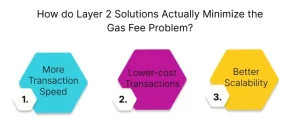 You must be wondering specifically about the ways in which the layer 2 solution actually reduces the gas fees. So, to clarify, here are the three main ways it does so.
You must be wondering specifically about the ways in which the layer 2 solution actually reduces the gas fees. So, to clarify, here are the three main ways it does so.
More Transaction Speed
When the processing of transactions is off-chain or in batches, the Layer 2 solutions notably reduce the network congestion or load. This surely increases the speed of transactions, thus reducing the gas fees.
Lower-cost Transactions
With Ethereum Layer 2 technologies like the Optimistic Rollups and ZK-Rollups, the users can execute the transactions at just a fraction of the cost as compared to Layer 1.
Better Scalability
Not only the speed and costs, but when the portion of transaction processes is off-chain, the Layer 2 networks are able to handle much larger volumes of transactions. This makes the blockchain technology more accessible for other operations, suiting the scalability needs of a business.
The Best Layer 2 Crypto Projects that Inspire the Future
There can be a number of Layer 2 solutions that are gaining recognition when it comes to the crypto space. Some of the most promising ones are the below:
- Arbitrum: It is a widely adopted Optimistic Rollup solution that improves the scalability of Ethereum.
- Optimism: Another optimistic rollup that is seeing a notable adoption and has strong developer support.
- Polygon (Matic): A sidechain-based Layer 2 solution that promises faster and cheaper transactions.
- zkSync—This is a leading ZK-Rollup solution that focuses on security and efficiency.
- StarkNet—an advanced ZK-Rollup solution that again improves the scalability of Ethereum.
All these projects are examples of better efficiency of blockchain and promise lower fees, which further inspires the greater adoption of the decentralized applications.
Will Layer 2 Solutions Completely Remove the Gas Fees?
This might be an interesting question because the potential of Layer 2 solutions is very strong. It is lowering the gas fees, but they may not be able to remove these costs completely. Here is why.
- Bridging Costs: When we move assets between Layer 1 and Layer 2, it is important to pay an initial fee.
- Security Costs: Maintaining security protocols like the fraud proofs and cryptographic validations does incur some operational costs, which is not possible to ignore.
- Adoption Barriers: Not all users and developers have shifted to Layer 2 solutions, which is why the Layer 1 solutions will still be in use for a long time, limiting the overall innovations in Layer 2 solutions.
Even after these challenges, Blockchain development solutions are constantly bringing improvements in the technology, which will bring on more ways to optimize the costs in the future.
The Role of Blockchain Development Companies in Implementing Layer 2 Solutions
After seeing the incredible benefits that Layer 2 solutions bring, more and more businesses are working with top Blockchain development companies who can help them integrate this technology into their platforms.
If you are also planning to apply this technology to your ecosystem, here is how a blockchain development company can help you:
- Smart contract development, which is optimized for Layer 2 execution.
- Scalability strategies using Layer 2 solutions for making the overall efficiency better.
- Security improvements to ensure a smooth Layer 2 integration.
User experience optimization to simplify Layer 2 adoption for non-technical users.
Key Blockchain Use Cases for Layer 2 Solutions
So many industries are already seeing the benefits from Layer 2 solutions for making their blockchain apps better. Here are some notable blockchain use cases where Layer 2 is making an impact:
- Decentralized Finance (DeFi): Faster and cheaper transactions on DeFi platforms and lowering the gas fees for yield farming and liquidity provision.
- NFT Marketplaces: Reduced minting costs and faster transactions, which give more affordable buying and selling of NFTs.
- Gaming and Metaverse: Seamless in-game transactions without high fees, which improves the overall user experience with faster interactions.
- Supply Chain Management: Secure and scalable blockchain-based tracking at a lower cost for smart contract execution.
- Enterprise Blockchain Solutions: Businesses integrating Layer 2 for more efficient operations.
When a business invests in Layer 2 solutions, they can surely improve their efficiency and expand their existing blockchain networks.
What To Look When Hiring Developers for Layer 2 Integration?
- There must be an Experience with Layer 2 frameworks like Arbitrum, Optimism, and zkSync.
- Knowledge of Solidity and smart contract development.
- Understanding of gas optimization techniques.
- Expertise in scaling blockchain apps.
Wrapping Up
We have touched nearly everything related to Layer 2 solutions and their integration into your existing systems. The future of gas fees will very much depend on how quickly and efficiently this solution will be adopted by the businesses.
When it comes up on a large scale, the gas fees will notably drop, making the overall user experience much better as compared to the Layer 1 solutions.
Although Layer 2 won’t remove the gas fees completely, it will surely be a scalable and cost-effective option for both the users and businesses. When you are sure to integrate Layer 2 in your business, be sure to choose a Blockchain software development company that has a relevant portfolio in Layer 2.

